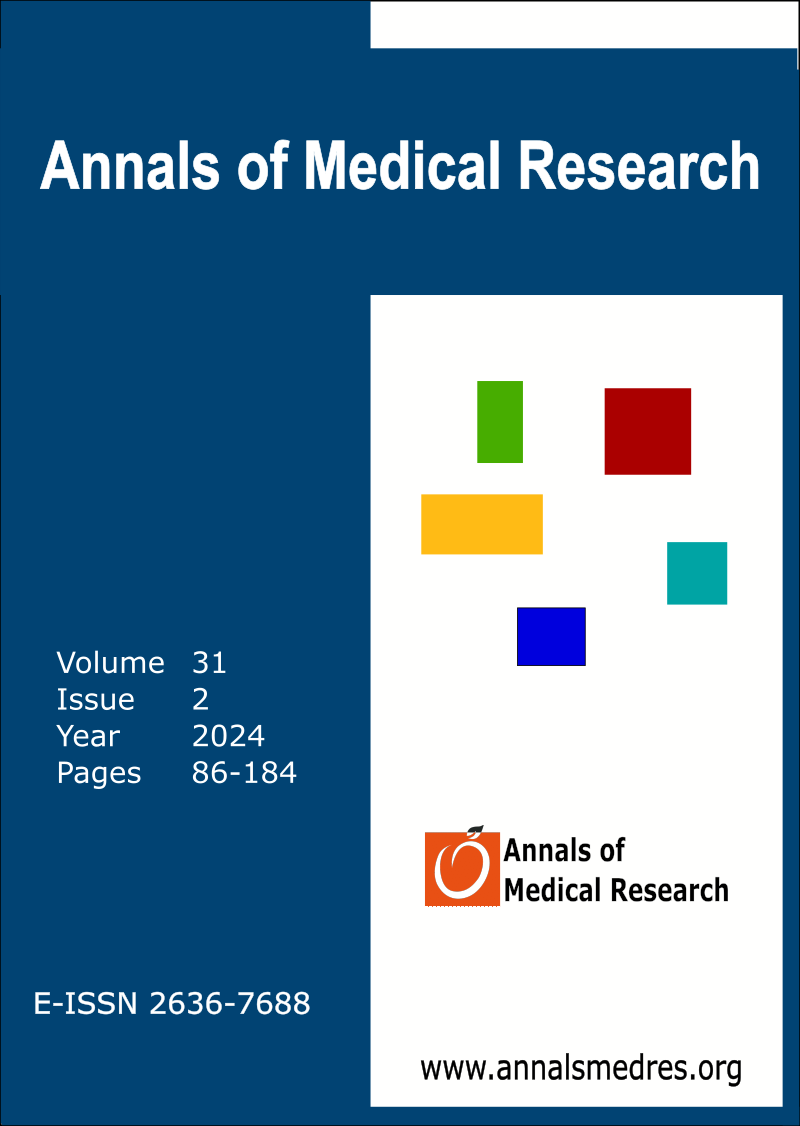Our experience in transcatheter aortic valve implantation (TAVI) from the anesthesiologist's perspective: A single-center retrospective study
Keywords:
Transcatheter aortic valve implantation, Anesthesia, Conscious sedation, Morbidity, MortalityAbstract
Aim: This study aimed to review the perioperative complications, morbidity, and mortality rates of patients who underwent TAVI at our tertiary care hospital.
Materials and Methods: The data for this retrospective study including 34 patients were collected from their medical records. Demographic characteristics, preoperative scores, comorbidities, echocardiographic measurements, laboratory values, procedure times, perioperative complications, and mortality rates were recorded.
Results: The study cohort, predominantly the elderly population (mean age 77.3 years), underwent TAVI under local anesthesia and sedation. Anesthetic induction involved fentanyl, ketamine, and midazolam, with adjustments using propofol, as needed. Hypotension is the most common anesthesia-related complication. The procedure was completed under conscious sedation in all cases that were not complicated by surgery, with no instances of respiratory complications. The most frequent procedure-related complication was atrioventricular bundle branch block. The postoperative outcomes demonstrated a significant reduction in aortic valve parameters, validating the efficacy of the procedure. The 30- and 90-day mortality rates were 0%, indicating favorable short-term survival. Maintenance of hemodynamic stability through vasopressors, with noradrenaline being the preferred choice. While the overall length of hospital stay averaged six days, TAVI contributed to shorter hospitalizations due to increased procedural experience and refined anesthetic approaches. A permanent pacemaker was required in 20% of cases.
Conclusion: This analysis contributes insights into the evolving field of TAVI, emphasizing the role of experienced anesthesiologists in optimizing patient outcomes. We aimed to underscore the importance of refining anesthesia protocols, staying abreast of emerging guidelines, and developing solution algorithms for emergency scenarios, ultimately enhancing the safety and efficacy of TAVI procedures in a rapidly expanding patient population.
Downloads
Published
Issue
Section
License
Copyright (c) 2024 The author(s)

This work is licensed under a Creative Commons Attribution-NonCommercial-NoDerivatives 4.0 International License.
CC Attribution-NonCommercial-NoDerivatives 4.0






